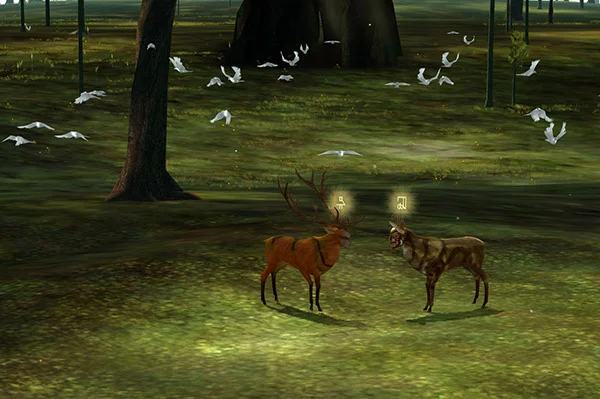Rorschmap
James Bridle, a renowned digital artist and founder of the popular blog (The New Aesthetic) based in London, in a mesmerizing, hypnotic visualization breaks the popular expectations of how Google Maps is supposed to function. Once on rorschmap.com, the user immediately sees an aerial view of London, England and the classic Google Maps toolbar in the lower left hand corner. However, the image is flipped and rotated 4 times, placing the images in an unmistakably kaleidoscopic arrangement. The destination point remains completely mutable so one can create and re-create a psychedelic image from virtually any point in the world. Additionally, Bridle includes the street view function where any view from the street taken by Google Maps can be positioned in these masterful topsy-turvy inception worlds. Each function Bridle includes on rorschmap.com is elegantly and clearly explained to ease user interaction.
Bridle presents a fresh idea with his introduction of breaking the Google Map interface from its traditional function. One would normally use Google Maps in order to find a destination or directions. The traditional site provides accurate useful information in a concise manner. Contrarily, Bridle takes an intelligent form of technology and makes it into something beautifully nonsensical. A map that gives you absolutely no sense of direction or position forces the one to break their dependence on structure and focus on the perpetually fluctuating visualizations. Bridle juxtaposes how organized informational tools can be broken down into something rather simple yet aesthetically pleasing. Therefore, it presents questions of perspective: What if we saw the world through different eyes? What if we could slow down enough to take informational platforms less seriously?
Kat Hannaford from Gizmodo states:
“Google Maps mash-ups are just the best, aren't they? Especially when they're as time-sucking as James Bridle's Rorschmap, which turns satellite images of the world into kaleidoscopes worthy of being stuck at the end of a plastic tube” Hannaford, Kat (2011, August 1) Guess the Cities That Have Been Kaleidoscoped on Google Maps
Rob Alderson quotes James Bridle with his own charismatic commentary on It’s Nice That with:
“It’s an endlessly fascinating tool which turns Google maps into a kaleidoscope, or, as he puts it: ‘Rorschmap is cartographic navel-gazing, a reframing of the map. It will not help you find anything. We are bored with your squares and your margins. We want new shapes and new dimensions….’ Top map mischief” Alderson, Rob (2011, November 10) James Bridle: Rorschmap
In an review on Hyperallergic about a collection of pieces shown in Abrons Art Center, Jillian Steinhower commented:
“Other standouts include James Bridle’s Rorschmap (2013), which turns the logic of Google Maps on its head by transforming sites into Rorschach-like mirror images that you can expand or contract with your arrow keys…” Steinhower, Jillian (2013, April 2) Tracing a Path from Cubism to Digital Art
Rorschmap has such a simple interface, yet one can argue it actually introduces rather interesting ideas about the labels our generation assigns tools such as Google Maps. Since the mass population finds themselves using these systems in everyday life, it’s refreshing to see manipulation to these programs at the extent of not being able to really grasp the original concept. This kind of manipulation of pop culture has the potency to inspire a conversation about things humans interact with in their daily lives, especially things in technology.
Michelle Teran, a Canadian digital artist, utilizes Google Maps in her own way to spark social commentary among her followers. She took data from Google Maps in order to find a site specific setting for a story she created for a Net.Specific exhibition. In her piece entitled Little Yellow House she found a yellow house located in Denmark to be the focal point of her story and invites other people to become active participants in her story. The data collected from Google Maps is intended to get her audience to think about the relationships people form with technology versus each other. This correlates on how Bridle’s piece brings into light the same sort of dependence humans have on technology.
The site http://therevolvinginternet.com/ by Dutch artist Constant Dullaart is also a play on the infamous Google search engine. This site literally puts a new twist on the traditional aesthetic of the Google home page. The site is simple, like Bridle’s reconstruction of Google maps, and presents this commonly used internet platform in a new perspective. The site still holds all of its functionality, but the webpage is constantly spinning which would be undeniably irritating for many.
Rorschmap was featured on the following sites:
La Repubblica, BoingBoing, Laughing Squid, Kottke, Notcot, Waxy, Geekosystem, Gizmodo, Buzzfeed, Reddit, Der Spiegel, The Daily What, Metafilter, CreativeJS, Coudal
Additional Links:
http://booktwo.org/notebook/rorschcam-nyc/ http://shorttermmemoryloss.com/portfolio/project/rorschmap/ http://netspecific.net/en/communication-paths/michelle-teran/about-the-artwork-the-little-yellowhouse-2012







